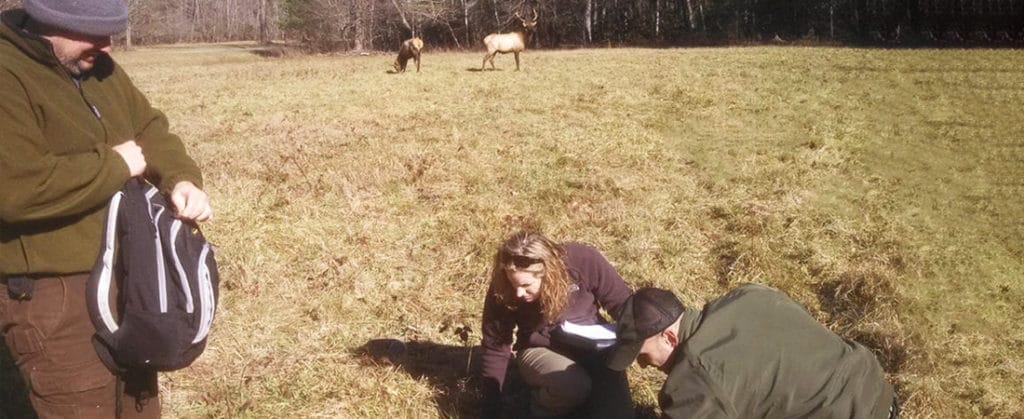The Great Smoky Mountain region is a vibrant ecosystem where wilderness and human activity exist alongside one another, even overlapping at times. The effects of this co-location can be seen in impacts on the flora and fauna of the region, and human infrastructure and experiences. The interconnection between the people and wildlife of the region is important to both present and future understandings of changes in the area, from geography to biodiversity.
Associate Professor in the University of Tennessee’s College of Veterinary Medicine Richard Gerhold’s work investigates this connection via the study of diseases found in wildlife in the region, specifically elks and bears.
 “My background is in a combination of parasitology and infectious diseases, with an emphasis on understanding disease transmission impact on populations and how human influences can be associated with transmissions,” said Gerhold. He and his team have been working in the Great Smoky Mountains investigating a particular parasite wreaking havoc on the local elk population: Parelaphostrongylus tenuis.
“My background is in a combination of parasitology and infectious diseases, with an emphasis on understanding disease transmission impact on populations and how human influences can be associated with transmissions,” said Gerhold. He and his team have been working in the Great Smoky Mountains investigating a particular parasite wreaking havoc on the local elk population: Parelaphostrongylus tenuis.
Historically this parasite, also called a brain worm, has existed in white-tailed deer, where it is relatively harmless. However, once transmitted to a non-natural host, such as an elk, moose, or even domestic animals, the parasite becomes extremely dangerous.
“Once inside an elk, this parasite starts wandering throughout the central nervous system, frequently ending up in the brain,” said Gerhold. “From there it can kill the animal or cause chronic diseases that lead to emaciation. It can also cause neurological issues that make them walk out in front of vehicles or engage in other abnormal and dangerous behaviors.”
According to Gerhold, this parasite is currently the primary infectious disease afflicting elk in the region, and the recent increase is partly attributable to human activity. Larger numbers of white-tailed deer in the region have likely contributed to the increased rate of infection in elk. The deer population has been impacted by laws designed to prevent over-hunting, as well as climate changes that result in fewer natural controls on the population. Gerhold also suggested urbanization has had an impact by creating areas where the deer population is difficult to control via hunting.
Gerhold hopes to develop a better understanding of these diseases and their spread. His team is collecting samples, both in the Great Smoky Mountain National Park and beyond, in an effort to catalogue existing infections and create a repository for future study.
“The biggest goal is to establish a baseline of information on the animals in the region. When white nose syndrome came along, we realized we had no basis of information from which to even begin,” said Gerhold. “We, as wildlife biologists, needed to stop being reactive and start being proactive about monitoring the health of the animals in the region.”
Gerhold’s team is currently developing a biobank of samples that will not only allow researchers to study known pathogens, but will provide a repository of information for future research into the history and mapping of infectious diseases.
